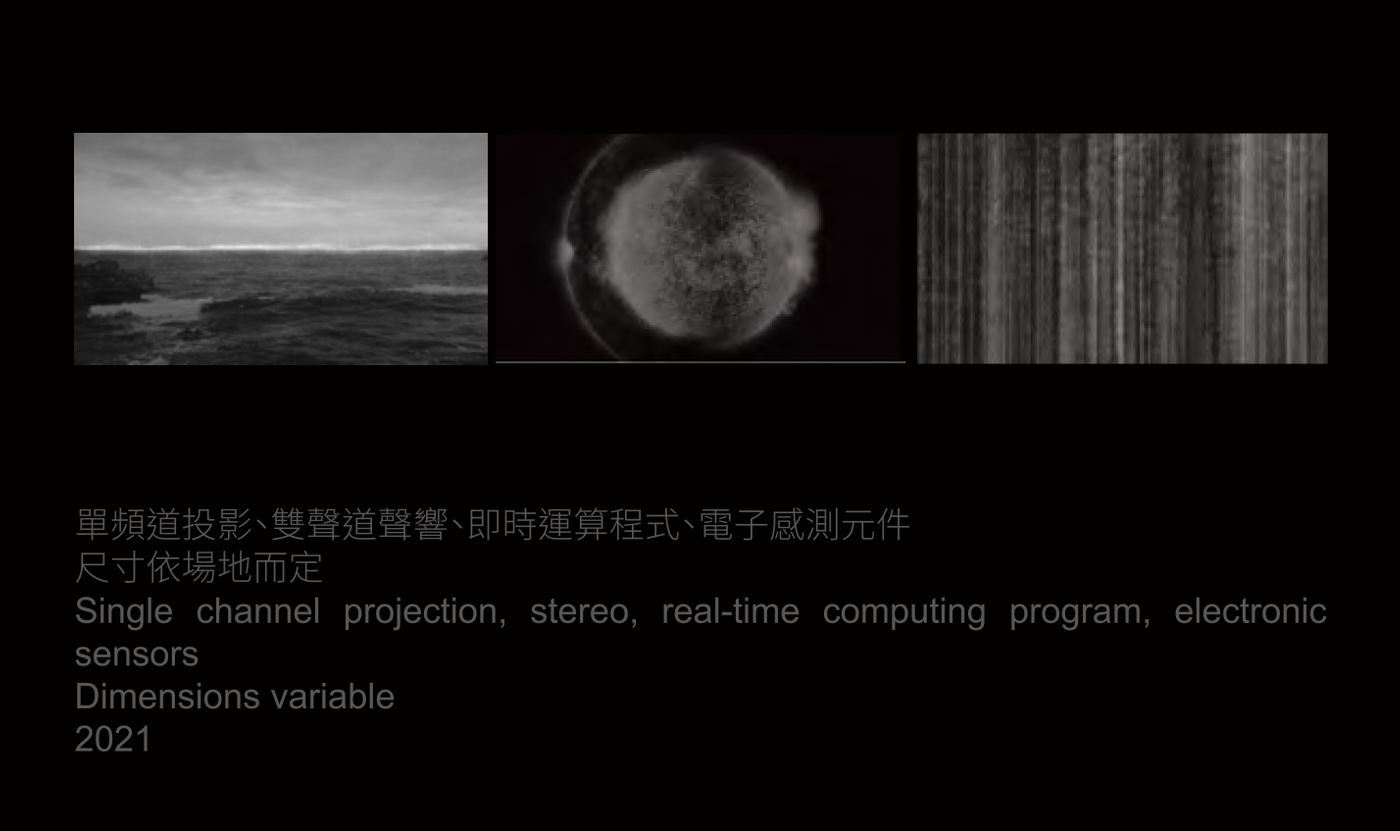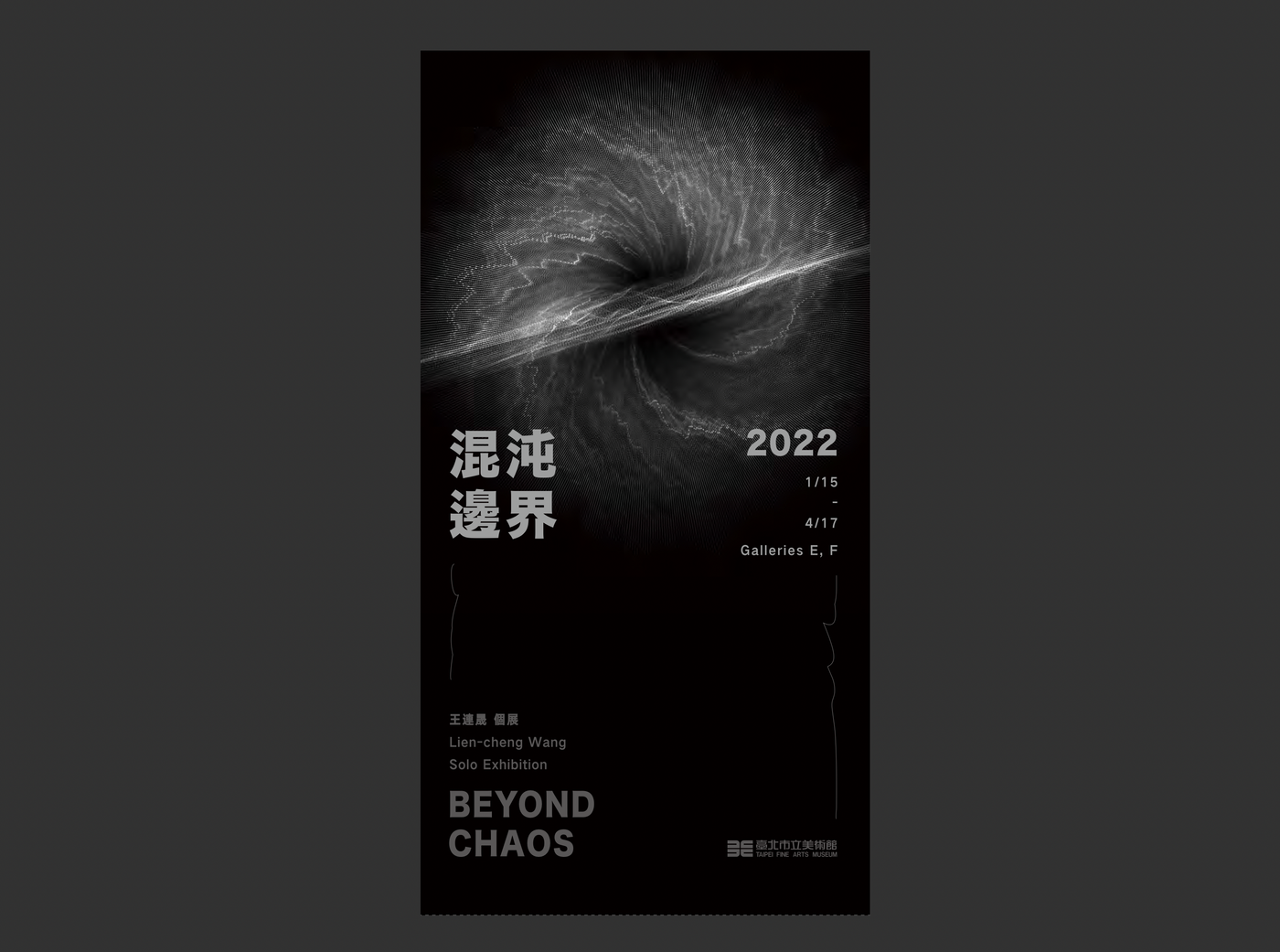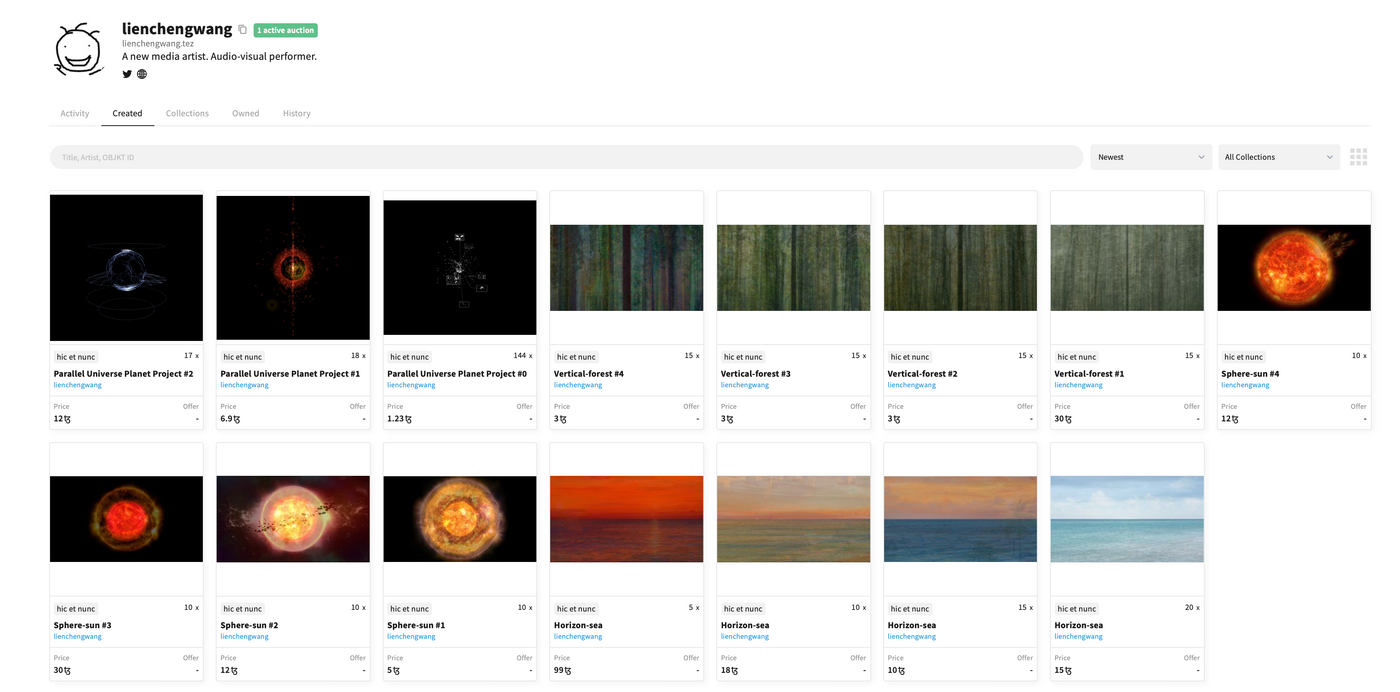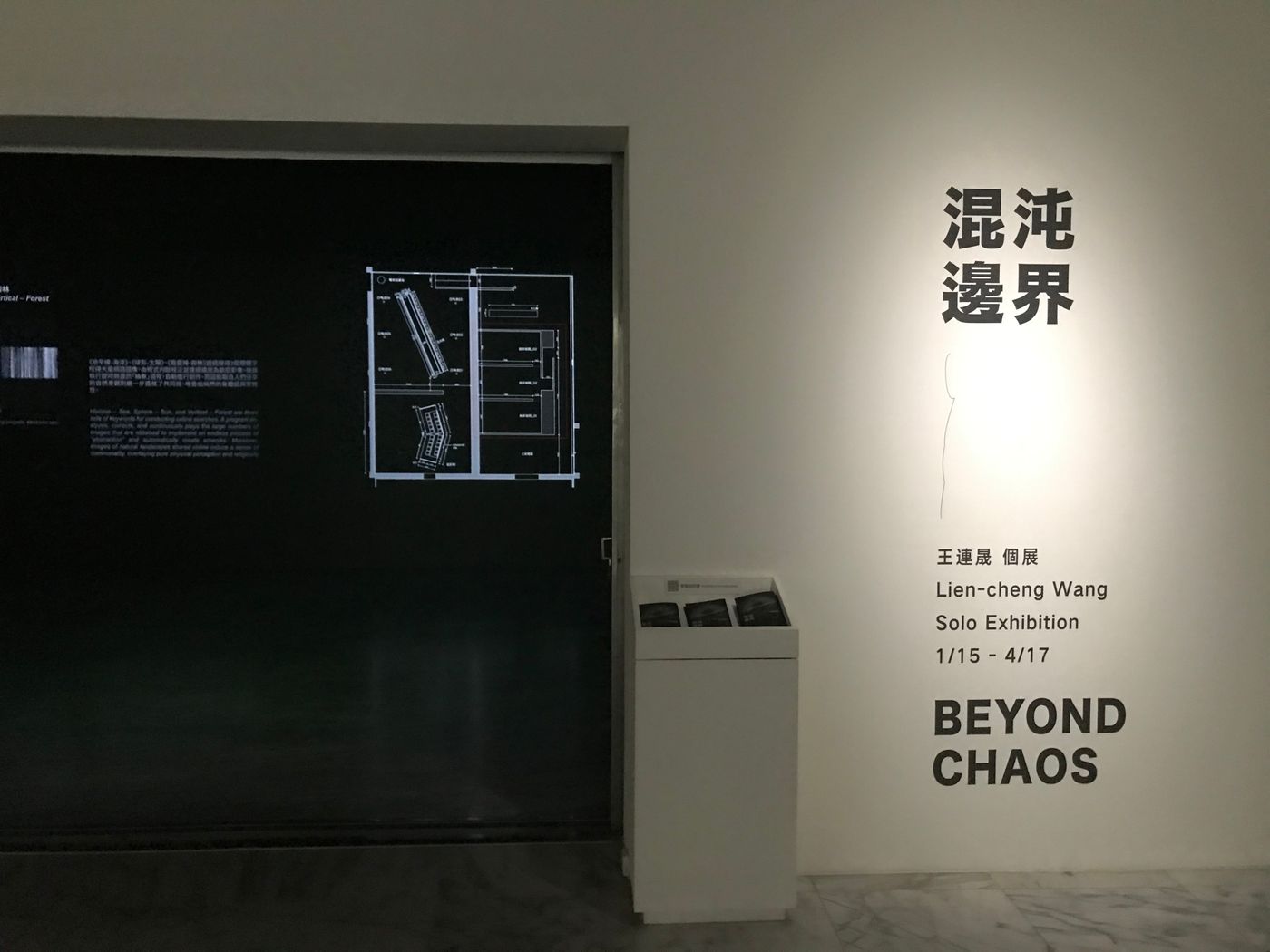
分散式自治實踐與研究者,尋找有別於電馭極權與財閥亂鬥的第三條路。喜歡討論,請別客氣與我討論。
Admire the NFT Collection at the Art Museum (North America Pavilion / Chaos Space)
How are you doing today when the price of the currency has plummeted? Share a happy shopping experience.
Recently my collection of NFT artworks was exhibited in Taiwan again. This is the third time, and it is in the North American Pavilion (Taipei Museum of Fine Arts).
The first time was Memo Akten's AI visual work " Deep Meditation " which was exhibited at the Taiwan Creative Content Conference (TCCF) at the end of last year; the second time was Wang Xinren's virtual landscape work "Path to the Future" in " Dear Bolak. Chen " (but mine is Path to the End ).
This time is Wang Liansheng's (referred to as Shrimp Dad)'s solo exhibition "Boundary of Chaos" in the North American Pavilion. The three series of works I have collected are "Horizon-Ocean", "Sphere-Sun" and "Vertical Line-Forest". Rather than exhibiting NFTs in the North American Pavilion, it is better to say that the artist displays the same work in different ways. NFTs are just one suitable medium, as are the giant projectors in the North American Pavilion.

Horizon-Ocean|Sphere-Sun|Vertical-Forest NFT Link
1. Sphere-sun #2
2. Horizon - sea
3. Vertical-forest #1
The screenshots can't show its brilliance, so I won't put pictures, please click to watch.
(It is also a great place for NFTs to be able to watch immediately)
"Horizon-Ocean", "Sphere-Sun", "Vertical Line-Forest" is a technological art work executed automatically by a program. Dad Shrimp wrote a program. After entering keywords (such as ocean, sun, forest), the program will automatically capture the pictures on the Internet, and after visual automatic correction, they will be synthesized into dynamic images for continuous playback.
According to the author and the fold, this series of works is drawn from "the natural landscape shared by human beings, which further creates a sense of commonality, and superimposes a pure sense of body and religion."
The entire context is similar to my article on popular science AI art (CLIP+VQGAN) a while ago , "Machines and Artists Created with Collective Minds". CLIP, an artificial intelligence suite, also collects all the pictures on the Internet that can capture keywords for training.
The practice of Shrimp Dad is more concise, and it is the automation of "rules". Shrimp Dad unifies the keywords and visual conditions, and uses the program as an extension to shake out the works of "Horizon-Ocean", "Sphere-Sun" and "Vertical Line-Forest", creating a common image of human beings.
I am very moved by my own collection of Shrimp Dad's works. Even if I don't understand the context, it is a very special visual work. In fact, I didn't know the subsequent production process and contextual discussions at first, so I was happy and mindless to collect.
In addition, it is very subtle to see that the art museum has its own collection of NFT works.
In the past physical era, I didn't know how long I would stay in the hospital to work, and what the annual salary would be. I could only get one after exhausting all my strength. And after receiving it, the home is not big enough, and I don’t know how to save it, let alone a large-scale technological art work constructed using machinery.
"Go to the museum to appreciate your collection"
NFT does not have this problem. For me, going to the museum to appreciate my collection is to synchronize the ideal presentation method in the artist's mind (perhaps a darker room, a larger screen, and a more shocking sound); on the other hand, Perhaps there is also a bit of pride in participating in the "publicness" of art. Although the amount of the collection is not high, it is all returned to the artist. It can help a little materially and spiritually. (In fact, the self-satisfaction part is relatively large)
In this era when NFTs will also enter art museums, Daisuke Miyazu, a well-known Japanese office worker collector, will also be envious.
In addition, I also highly recommend the "Boundary of Chaos" exhibition. By the way, I recommend some books and podcasts to make the whole exhibition more interesting!
Please read it in conjunction with the electronic version of the Chaos Frontier manual .

Five exhibits, five extensions are recommended.
1. <horizon-ocean> <sphere-sun> <vertical line-forest>
Refer directly to the corresponding NFT artwork on the Tezos blockchain. (Secretly said that the forest series is not sold out, it is about NT$250 now)

Shrimp Dad NFT page overview link
The worker bees
The worker bees are a swarm of four-axis drones. They will take off on the hour to collect exhibition information and affect the information to the last exhibit. Recommended reading: "The Age of Surveillance Capitalism " (Times Publishing), the chapters "Machine Controls Collective Consciousness" and "Life in the Hive" complement the Shrimp Dad exhibit. If you don't have time to read, you can also listen to the bookstore Podcast " EP. 16 "The Age of Surveillance Capitalism-One" ── Late but not absent / GOOGLE's Seven Advertising Department / The Evil Dr. Skinner Super Powers Expand "
3. Artificial waterfall
Popcorn is 3D-printed from cornstarch, woven into an artificial waterfall by an endless conveyor belt. At the same time, there is a long corridor made of corn plants and transparent plates, leading to the waterfall. The artist wants to discuss genetically modified corn and the crop production industrial complex. I would like to recommend " The Omnivore's Dilemma: A Natural History of Fast, Organic, and Wild Foods " (published by everyone), which discusses the industrialized food chain and the giant cycle of the US corn industry. Similarly, if you don't have time to read, you can also listen to the bookstore Podcast " EP.62 "The Omnivore's Dilemma"_ "The question is, who should I let eat my shit (!? "
The callers
There are six seats in total, and each seat has two mobile phones. Dad Shrimp placed the two mobile phones opposite each other. The screen displayed a waterfall of text displayed with the keywords of the six major religions. Brightness is linked. The artist admits that this work discusses the existence of religion, so here I recommend " What Technology Wants " (Owl Publishing) plus " The Evolution of God: The Origin, Conflict and Future of the Three Western Monotheistic Religions", I have not read the latter one It's over, but I think it's pretty good as a counterpart to the exhibit text.
5. Equity Program
Daddy Shrimp set up a dark theater, and the movie screen displayed the trend chart of individual stocks in Taiwan. Daddy Shrimp also used open-sourced programs to automatically predict the rise and fall of individual stocks, hoping to discuss the reflexivity of finance. Reflexivity is a keyword I added privately. When information flows greatly, it will affect the stock market volume and price itself. I think it's the same intention as Daddy Shrimp's program kit to influence the stock market's rise and fall. I recommend Adapting: New Thinking in Financial Evolution (published in capital letters), which I recently read, and I can't stop reading it. The concept of the author Andrew W. Lo is that the financial market is not 100% controlled by rational people, so the market does not operate 100% rationally. There are random walks and habits and timings that deviate from rationality. At this time, there are arbitrage opportunities. Opportunities evolve financial tools, but efficient financial tools will also make the market return to rationality, resulting in a decrease in arbitrage space. The entire market is an evolutionary history, from traders, mutual index funds, quantitative funds, automated market makers, all the way to the rapidly evolving hedge funds. The book itself is a bit thick, but unfortunately there is no Podcast guide for everyone in the bookstore.
in conclusion
This is the first time I see my own collection of NFTs in the North American Pavilion. In the process of technological art, computational art, and encryption art gradually moving from the edge to the center, we are more able to get used to and enjoy this.

(The cover is another NFT work by Wang Liansheng: Parallel Universe Planet Project #2 )
Like my work?
Don't forget to support or like, so I know you are with me..
Comment…